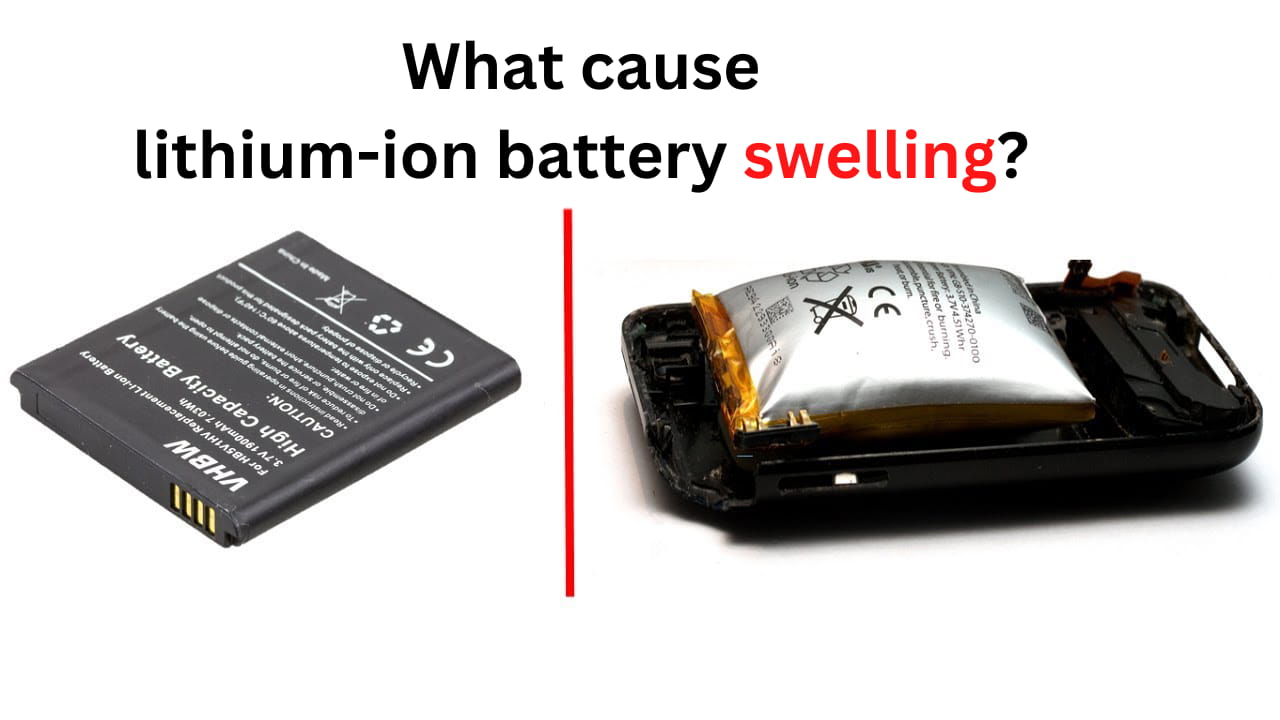What cause the lithium-ion battery swelling?
The lithium-ion battery has become an essential part of our lives, powering the devices that keep us connected and informed. Unfortunately, due to their complex design, lithium-ion batteries can sometimes suffer from swelling or bulging. This phenomenon can be hazardous, damaging the device and even causing a fire. This article will discuss what causes lithium-ion batteries to swell and how they can be prevented.

What Cause Lithium Battery Swelling?
Lithium-ion batteries swell due to several key factors: the age of the battery, exposure to high temperatures, overcharging, and defective or low quality.
The age of the battery
The age of a lithium-ion battery can affect its performance, with the battery potentially swelling as it begins to degrade over time. Lithium-ion batteries are used in many standard devices, such as cell phones and computers, so it is essential to understand why this may happen.
Generally speaking, the cause for lithium-ion battery swelling is due to the accumulation of gas that builds up inside the battery over time. As the battery ages and cycles through charging and discharging, dendrites are formed, which can cause short circuits within the battery’s cells. This causes an increase in pressure within the cells resulting in them expanding or ‘swelling.’ This often results in poor performance or permanent damage to your device if left unresolved.
Exposure to high temperatures
Lithium-ion batteries can be prone to swelling if exposed to high temperatures. The phenomenon is known among engineers as a ‘thermal runaway.’ When a lithium-ion battery is exposed to heat above its rated limit of 60 degrees Celsius (140F), its electrolyte decomposes and releases gasses. This causes an increase in pressure and volume within the cell, which results in the tell-tale swelling that many of us have seen first-hand. Furthermore, as this process continues over time, it can lead to other thermal runaway events that result in short circuits or potentially even fire or explosions.
Overcharging
When a lithium-ion battery is charged beyond its capacity, it can cause the cell membranes to become unstable and increase pressure inside the cells leading to swelling. This can occur when using chargers with an improper voltage output or when a device is left plugged in too long. In addition to increasing size, overcharging can also decrease battery performance and possibly damage other components around the swollen area, like protective casing or circuit boards.
The Defective or low quality
Defective or low-quality lithium-ion batteries are prone to swelling because the battery cells have been poorly manufactured. This means they cannot contain and manage the energy produced when charging correctly. As a result, the cells will expand as more power is being put into them until they eventually rupture and swell up.
How to Prevent Lithium Battery Swelling?
Swelling or bloating lithium batteries is a serious issue as it can negatively affect the device, alter its performance, or even cause it to malfunction. Fortunately, there are several steps you can take to prevent this from happening.
Avoid excessive charge and discharge.
First and foremost, it is essential to charge them appropriately. Lithium batteries should always be plugged in if they have already reached their maximum capacity. Doing so will increase the battery’s internal pressure and lead to swelling. Additionally, users should avoid deep discharging a lithium-ion battery, Lithium batteries should be charged and discharged between 40-80%. The deep discharge will also strain it and result in swelling or other damage.
Use and preserve the battery at room temperature.
Second, keep your lithium battery at an optimal temperature. Temperature extremes can cause the battery to swell, so keep it between 0-45 degrees Celsius. And always store your device in a cool place away from direct sunlight or freezing temperatures.
Use high-quality chargers
Avoid using third-party chargers for your lithium battery as these may not be compatible with your device and could lead to overcharging or discharging the battery. Using only official chargers will help you maintain optimal lithium battery performance and reduce the risk of swelling.
Don’t leave your device plugged in.
You should avoid leaving your device plugged in for extended periods. Overcharging a lithium battery can cause it to swell and potentially damage your device’s internal components. To prevent this from happening, unplug your device once it’s fully charged and only plug it in again when you need to recharge.
What Should I Do With Swollen Lithium-Ion Batteries?
There are several essential steps to take if you have a swollen lithium-ion battery.
First and foremost, do not charge or use a device that has a swollen battery. Swelling indicates either a defect in the battery or an issue with how it is managed and charged. Using a malfunctioning battery could lead to further problems or even fire hazards.
Secondly, remove the battery if possible and contact the manufacturer or retailer where you purchased your device. To determine what steps they recommend in terms of warranty coverage or replacement options for your swollen lithium-ion battery.
Thirdly, safely dispose of your old lithium-ion battery by taking it to an authorized recycling center or another disposal facility for hazardous materials such as lithium batteries. Please do not put them into regular trash, as this poses environmental and safety risks for others who come into contact with it.
Lastly, replace your lithium-ion battery with a new one from a reputable source if you intend to continue using the device powered by the swollen battery. Make sure its specifications match those of your original device’s power source so there won’t be any compatibility issues when using it again.
Conclusion
The swelling of lithium-ion batteries is a serious concern that needs to be addressed. To avoid battery swelling, it is crucial to consider the safety guidelines associated with using and storing lithium-ion batteries. High temperatures, overcharging, and incorrect charging are all contributing factors that can cause battery swelling. Additionally, understanding the weak points of lithium-ion batteries and following manufacturers’ recommendations can help prevent battery swelling in the future.








